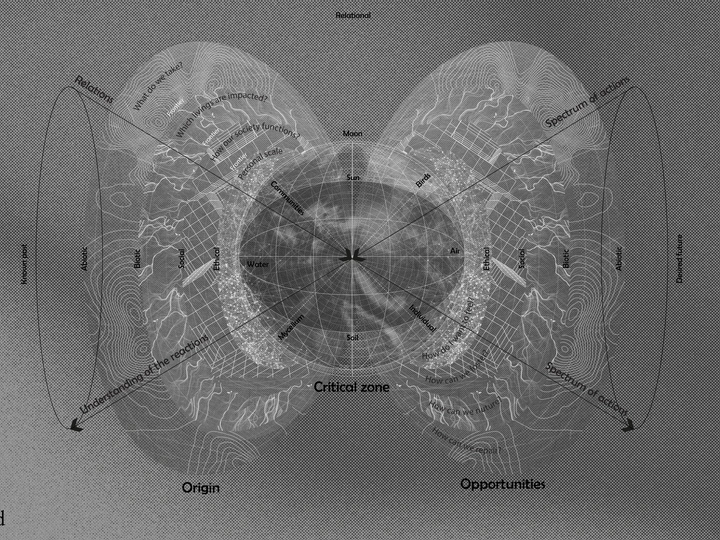Archifacts: exploration of the cènes alternatives

Charline Lalanne
Angela is an architect and professor leading Studio HAAU, a cross-disciplinary practice exploring spatial ecologies and the hidden metabolisms of urban environments. Her work spans design experimentation, curatorial research, and participatory protocols—anchored in new materialism and invisible infrastructures. Formerly the lead architect in the research division of Chartier Dalix Architects, she contributed to award-winning projects that integrated architecture with urban biodiversity and material circularity. She has also collaborated with international NGOs, framing architecture as a convergence point between design, pedagogy, psychology, and civic engagement.
Currently a Planetary Transitions Fellow Angela investigates Brandenburg’s heating transition, positioning geothermal infrastructure as a planetary actor. Her work explores how overlooked systems shape material flows and collective imaginaries, linking urban form with broader energy regimes.
Charline Lalanne is a regenerative designer and architect working at the intersection of spatial systems, ecological transformation, and speculative futures. Trained in France and the UK, and with experience across four continents, she brings an interdisciplinary approach that bridges design, research, and cultural mediation. Her work examines the entanglements between living systems and the Anthropocene, often through biomaterials and non-Western cosmologies.
She has led architectural research in Paris, developed internal innovation strategies, hosted the Échanger podcast, and authored a CSR framework. As the founder of the Office for Planetary Relationships (OPR), she investigates infrastructure through the lens of worlding and planetary care. She also teaches and facilitates workshops on design and ecological imagination.
Together, Angela and Charline are united by a commitment to rethinking architecture beyond the human, positioning Gaia and all forms of life as their primary clients.
The Anthropocene names the epoch in which human activity has become the dominant force shaping Earth’s systems. In its wake, a proliferation of -cènes—Capitalocene, Chthulucene, Plasticene—has emerged, each describing different forces, systems, and imaginaries driving planetary transformation.
Our project builds on this narrative ecology and proposes a new architectural object: the archifact. Archifacts are post-Anthropocene artefacts, material and symbolic forms that give shape to the different -cènes—existing, speculative, or yet to come. Each archifact becomes a story, a prototype, and a proposition: a way to imagine and act through architecture toward futures we want to inhabit.
These artefacts acknowledge that architecture is no longer a neutral backdrop or mere shelter, but a medium entangled with energy, politics, atmosphere, soil, and code. To develop them, we will use the Office for Planetary Relationships’ mapping system to explore the critical zone—the thin layer of the Earth where life unfolds between geology and technology, humans and more-than-human forces.
Archifacts will be explored through four conceptual lenses:
• The immaterial — air, gases, invisible data
• The structural — infrastructures, politics, geography
• The natural — more-than-human actors and ecosystems
• The ground — soils, sediments, geological time
Through workshops, residencies, lectures, and fieldwork, we aim to collectively identify, prototype, and share these archifacts. They will serve as architectural tools for storytelling and transformation—bridging speculative design, ecological literacy, and systemic care. We propose to explore, define, and collectively map the past, present, and future of architecture through these archifacts—gathering what already exists and inventing what is missing.
This project invites architects and allied disciplines to rethink their agency: not as builders of fixed forms, but as co-authors of the worlds we choose to make.